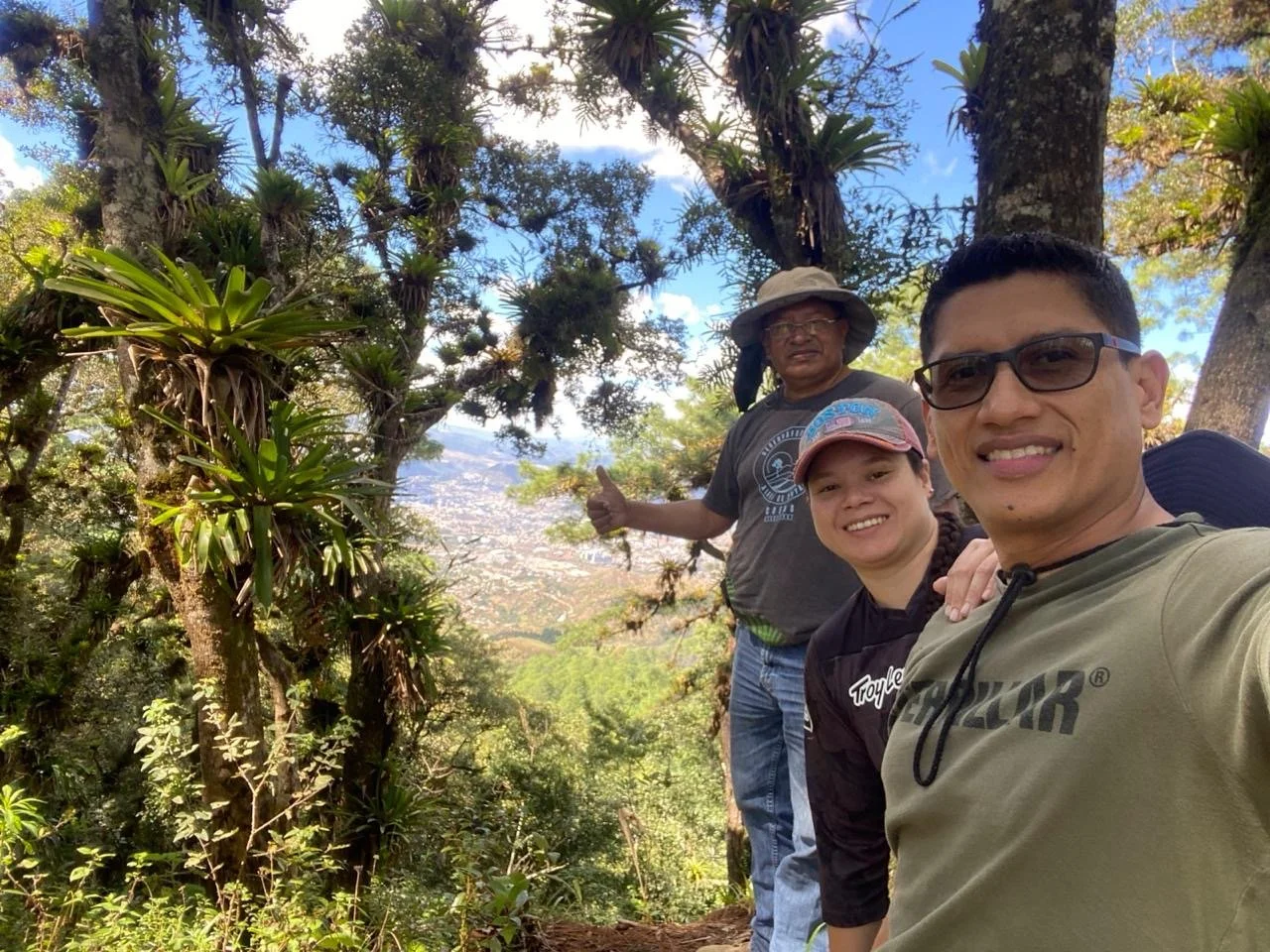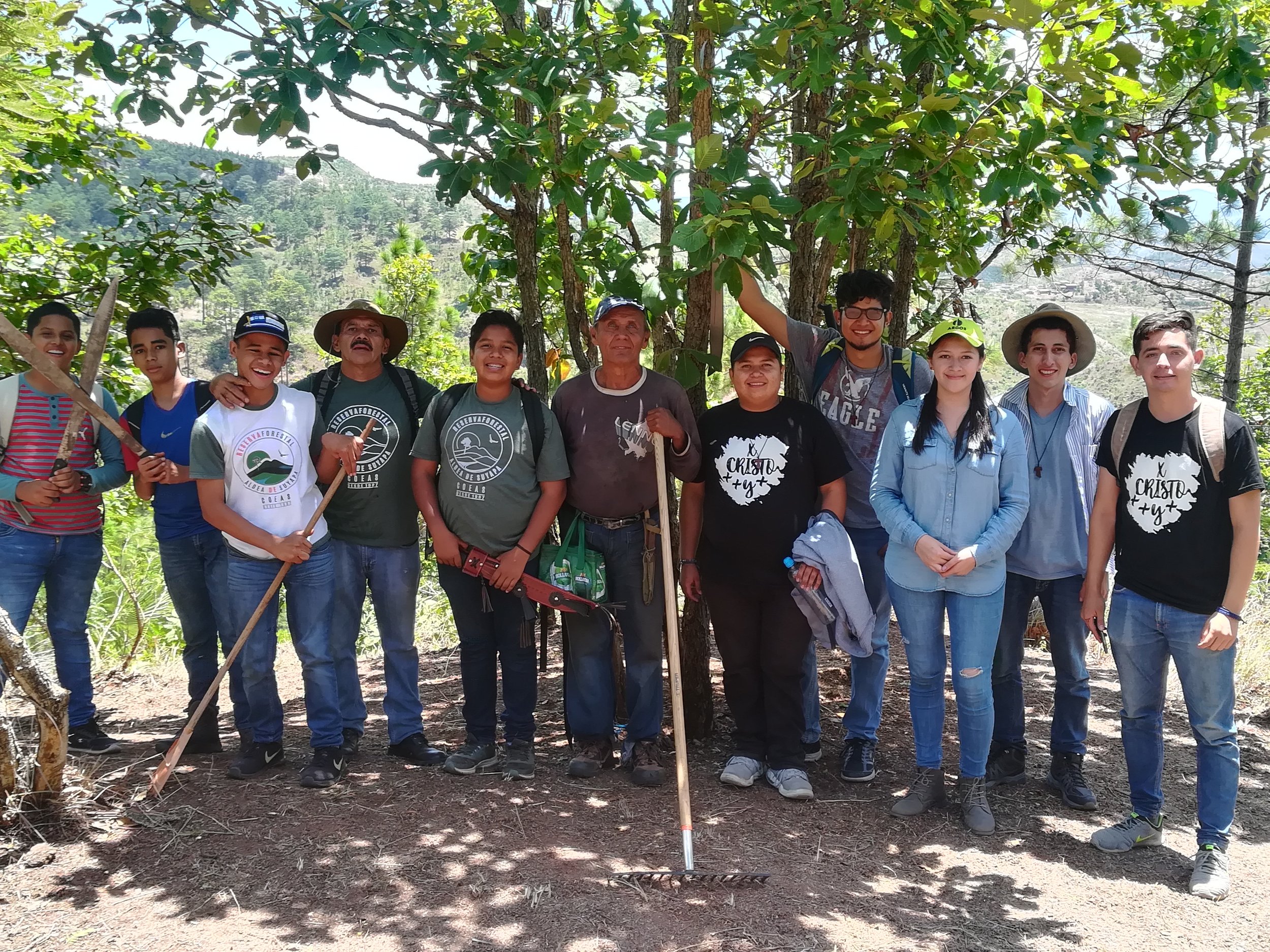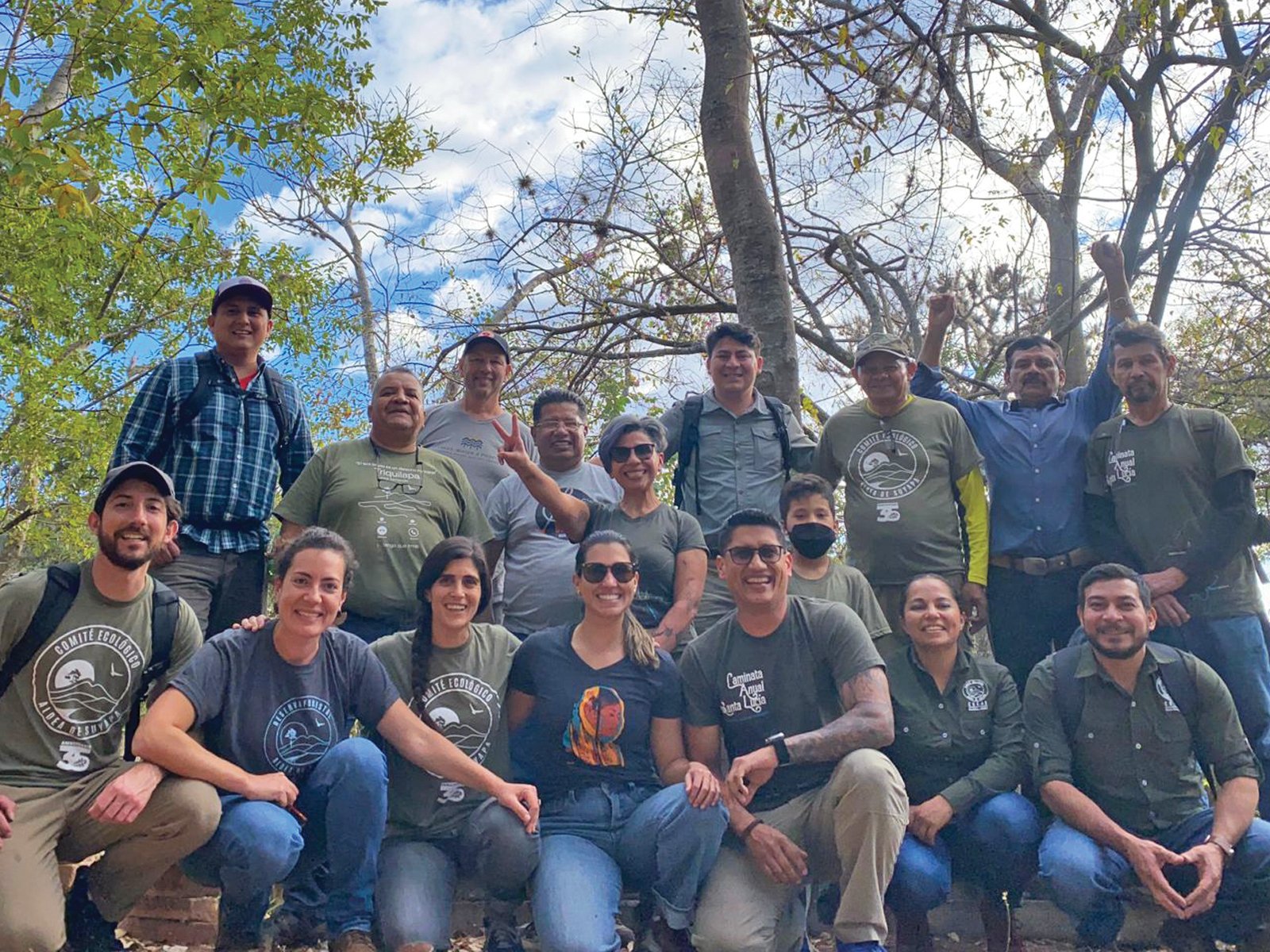REMEMBERING CARMEN
COEAS member Carmen Rodríguez, only 40 years old, left us very suddenly on August 19.
This loss, along with the death of Luis Hernán Baca “Mero,” has left a huge hole in the hearts of our friends and colleagues at COEAS, but it has also left one in the hearts of the entire TWP team.
United for Suyapa Wildlife Refuge: Forest Fire Prevention and Ecological Restoration
The dry season in Central America, which extends from January to April, presents a high risk of forest fires every year; March and April are usually the most critical months. In 2024, this situation worsened considerably with the presence of the El Niño phenomenon, which raised temperatures to historic levels.
Visit to the Ecological Committee of the Aldea of Suyapa (COEAS) Nursery
Thanks to funds managed by TWP through the Forix Foundation, it was possible to improve and expand the facilities of the historic COEAS nursery.
Following in a Hero’s Footsteps
In 1987, when the Comité Ecológico Aldea de Suyapa (COEAS) began to protect the mountain, it did so with a group of young men and women committed to taking care of the area's water resources
Dignified Livelihoods: Honoring “El Día del Trabajador”May 2024
“El Día del Trabajador” or “Labor Day” is celebrated throughout Latin America on May 1st, but to us at TWP, we believe it should be celebrated every day! Our team is proud to collaborate with local partners that help train, empower, and engage people to work hard for their communities, natural resources, rights, and economic opportunities.
Conservation on the Ground
Within two weeks of having legally created a new 12,600 acre national Wildlife Refuge Suyapa - Luís Hernán Valladares Baca “Mero” on the edge of Tegucigalpa, Honduras, it was set ablaze. Today, some 5% of the 59,000 acre La Tigra National Park, in Tegucigalpa is on fire, and the capital is shrouded in smoke.
The Great One
After a unanimous congressional vote, 12,620 acres of forest and a water source serving 5,000 families will be permanently protected as the Wildlife Refuge of Suyapa, Luís Hernán Baca Valladares, “MERO”.
Meaningful Change Takes Time
This week, after almost 40 years of struggle to draw attention to their cause, Honduras’ National Congress will hold a vote on declaring COEAS’s forest a 12,000 acre National Wildlife Refuge, based on the rich biodiversity seen and recorded there.
Sailing Towards Success: COEAS’ path to preserve their invaluable forest
The members of the ecological committee of the Aldea of Suyapa (COEAS), have many things in common, such as solidarity, empathy and passion, but above all, there is something that unites them: the love for nature.
Defenders of the Triquilapa Mountain
Our partners at Comité Ecológico Aldea de Suyapa (COEAS) in Honduras have been fighting for over 2 decades to protect the Triquilapa Mountain which is a vital source of water and oxygen to the Aldea Suyapa and Tegucigalpa, Honduras. This year we celebrated alongside them the upcoming declaration by the National Congress of Honduras of the Triquilapa and Cantagallo Mountains as a Wildlife Refuge. This is a big win for the sovereignty of the Indios Laborios of the Aldea de Suyapa.Proud that TWP was able to help get them to this point... and grateful that we get to support these efforts daily!
The Sawdust Carpets of Suyapa
For decades, the community of Aldea de Suyapa has followed in a Latin American tradition of creating an Easter procession route through their community, marked by a series of sawdust carpets, designed and created by local youth. This is a tradition dating back hundreds of years, with strong continuity in Mexico and Central America.
Triquilapa and Cantagallo Declared a Wildlife Refuge
This month we celebrate alongside our partner the Ecological Committee of La Aldea de Suyapa (COEAS) the upcoming declaration by the National Congress of Honduras of the Triquilapa and Cantagallo Mountains as a Wildlife Refuge. The mountains of Triquilapa and Cantagallo are located to the east of the Central District, Honduras, ten minutes from the Aldea de Suyapa, also a cultural heritage of the country. These geological formations are the largest suppliers of water for La Aldea de Suyapa and surrounding communities, and have an endemic biodiversity of subtropical dry forest.
Indigenous Sovereignty in Aldea de Suyapa, Honduras
One of Trees, Water & People 's priorities is to defend Indigenous sovereignty, where Indigenous communities have a say in any decisions that affect their land, resources, people, culture and governance.
In Honduras, the Indios Laborios de la Aldea de Suyapa are on the verge of a big win for their sovereignty, in declaring 5,000+ hectares of their communal forest a nationally registered Wildlife Reserve, to be co-managed by local communities.
TWP partner COEAS fights 6th Forest Fire in Six Weeks
Every fire season is an existential crisis for our friends in the Aldea de Suyapa, Honduras. Since 1987, a volunteer group of community members have organized to protect their centuries-old communal forest from firewood poachers, land grabbers, and the expanding agricultural frontier.
















